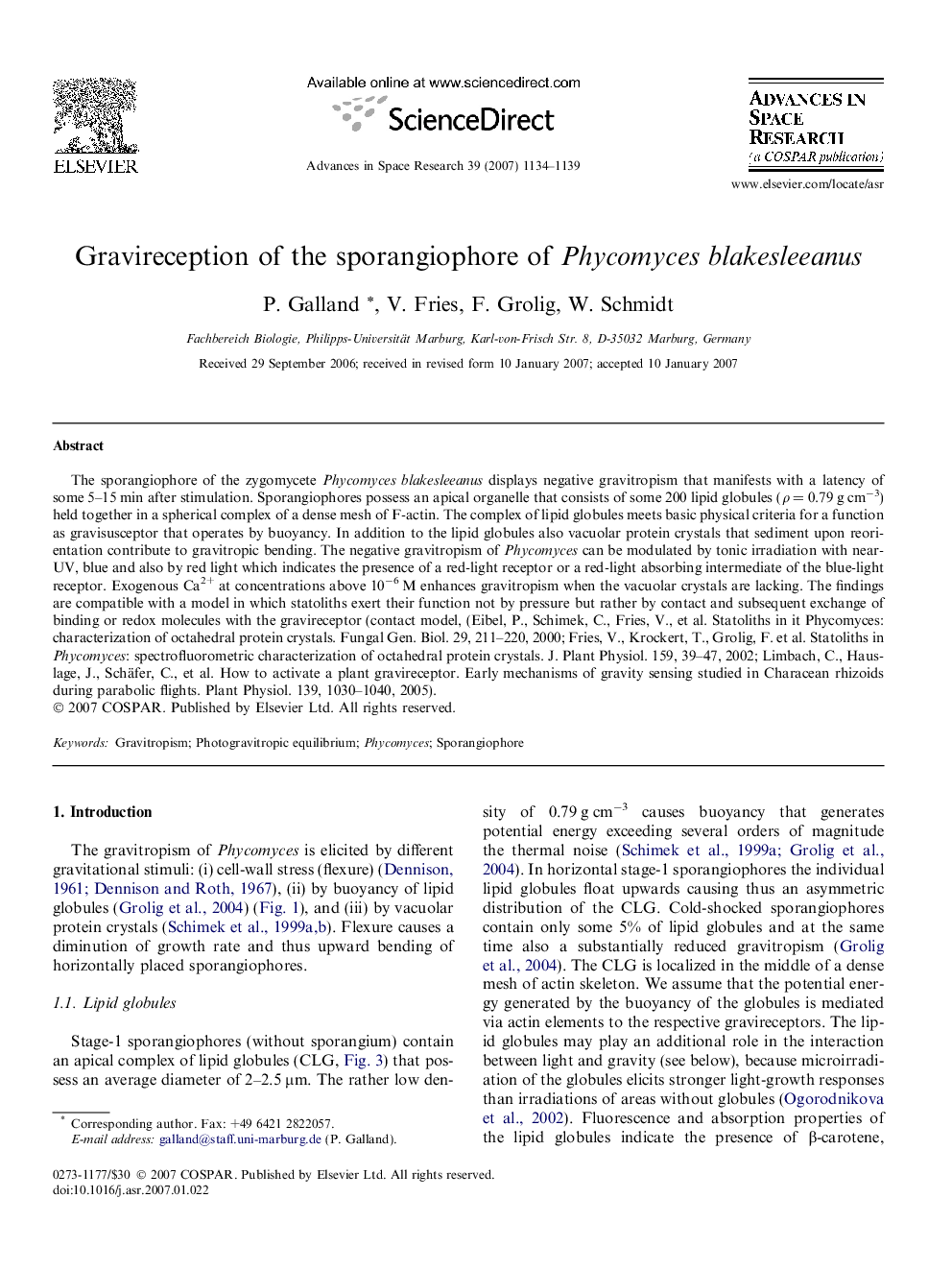| Article ID | Journal | Published Year | Pages | File Type |
|---|---|---|---|---|
| 1768941 | Advances in Space Research | 2007 | 6 Pages |
Abstract
The sporangiophore of the zygomycete Phycomyces blakesleeanus displays negative gravitropism that manifests with a latency of some 5-15 min after stimulation. Sporangiophores possess an apical organelle that consists of some 200 lipid globules (Ï = 0.79 g cmâ3) held together in a spherical complex of a dense mesh of F-actin. The complex of lipid globules meets basic physical criteria for a function as gravisusceptor that operates by buoyancy. In addition to the lipid globules also vacuolar protein crystals that sediment upon reorientation contribute to gravitropic bending. The negative gravitropism of Phycomyces can be modulated by tonic irradiation with near-UV, blue and also by red light which indicates the presence of a red-light receptor or a red-light absorbing intermediate of the blue-light receptor. Exogenous Ca2+ at concentrations above 10â6 M enhances gravitropism when the vacuolar crystals are lacking. The findings are compatible with a model in which statoliths exert their function not by pressure but rather by contact and subsequent exchange of binding or redox molecules with the gravireceptor (contact model, (Eibel, P., Schimek, C., Fries, V., et al. Statoliths in it Phycomyces: characterization of octahedral protein crystals. Fungal Gen. Biol. 29, 211-220, 2000; Fries, V., Krockert, T., Grolig, F. et al. Statoliths in Phycomyces: spectrofluorometric characterization of octahedral protein crystals. J. Plant Physiol. 159, 39-47, 2002; Limbach, C., Hauslage, J., Schäfer, C., et al. How to activate a plant gravireceptor. Early mechanisms of gravity sensing studied in Characean rhizoids during parabolic flights. Plant Physiol. 139, 1030-1040, 2005).
Keywords
Related Topics
Physical Sciences and Engineering
Earth and Planetary Sciences
Space and Planetary Science
Authors
P. Galland, V. Fries, F. Grolig, W. Schmidt,
